Since 2017
Palawan Island, Philippines
The overall objective of the project is to improve knowledge about the ecology and behaviour of the binturong, as well as the actual status of its population in Palawan. Our scientific studies combine photographic trapping and radio-tracking to obtain vital information for the creation of a suitable conservation programme.
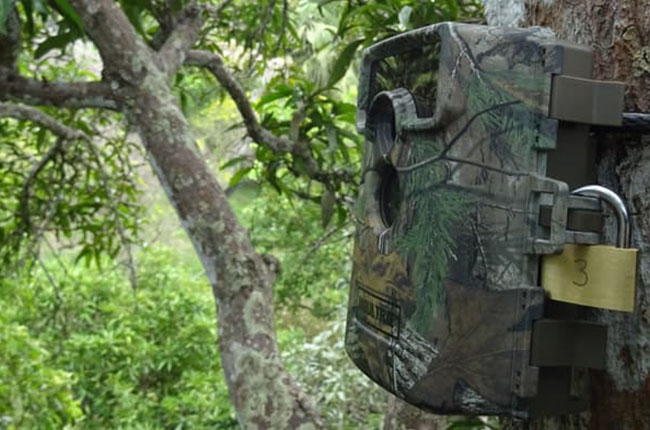
The binturong, in addition to being barely known by the general public, has been very little studied by scientists. The majority of available data on its behaviour, reproduction and diet come from captive studies. Only a few studies have been carried out in the natural environment, allowing only a vague idea of the size of its territory, its natural diet or interactions between individuals or with its environment. The main reluctance of scientists to study this animal lies in the fact that the binturong, due to its natural behavior, is particularly difficult to observe. In fact, living between 10 and 20 meters high and being mainly active at night, the conventional study methods often do not allow to collect accurate and reliable information. Nevertheless, driven by his passion, it takes more to stop the ABConservation team!
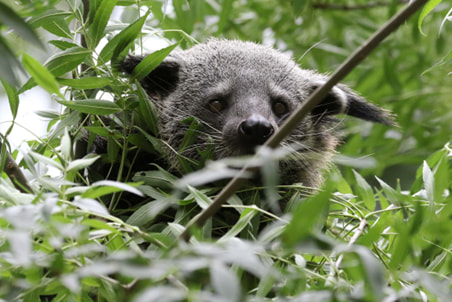
Photograph of binturong - MNHN, France. Credit E. Baril
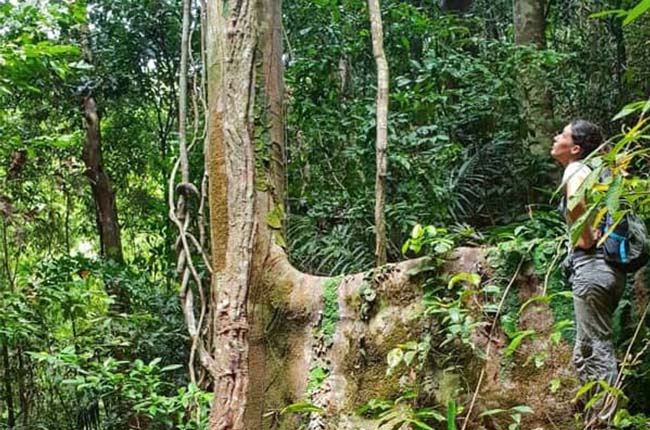
Photograph of the former research site - El Nido forest, Palawan Island, Philippines. Credit: D. Van Rooyen
Since 2017, the goal of the Bearcat Study Programme "is to improve knowledge of specific aspects of theecology and natural behaviour of the binturong.
Eventually, the aim will be to estimate the distribution and the size of the binturong population on the island of Palawan. This knowledge is crucial for the establishment of a conservation programme perfectly adapted to the needs of the species. Because infinal how do you protect something you don't know?
As a result, the studies we have set up focus on three themes:
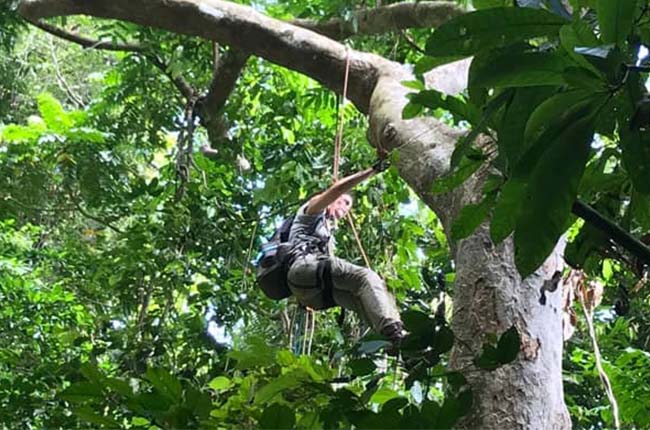
Photograph of tree-top camera installation - El Nido forest, Palawan Island, Philippines. Credit D. Van Rooyen
The first two years of work were devoted to the development and implementation of a photographic tree trapping. Camera traps are installed between 5 and 20 meters high. The hard work of our team has significantly increased the detection rate of binturong by photographic trapping.
41
Photographs obtained between 2017 and 2019
1,38
Detection rate in a forest in the northeast of the island
0,7
Best rate currently available in scientific literature
0,062
Median detection rate in published studies
We have the objective of tracking a wild individual using a GPS-equipped transmitter collar. Thus, through the data from photographic trapping and the transmitter collar, we can collect key data on the behaviour of the binturong and the use of its territory.
This information will be of a very varied nature since it is as much to identify the species of trees used as resting or feeding sitesas to determine the home range of the binturong.
All the results of our studies are or will be subject of scientific publications, most of which are freely available. For more information, you can go to the scientific documentation section.
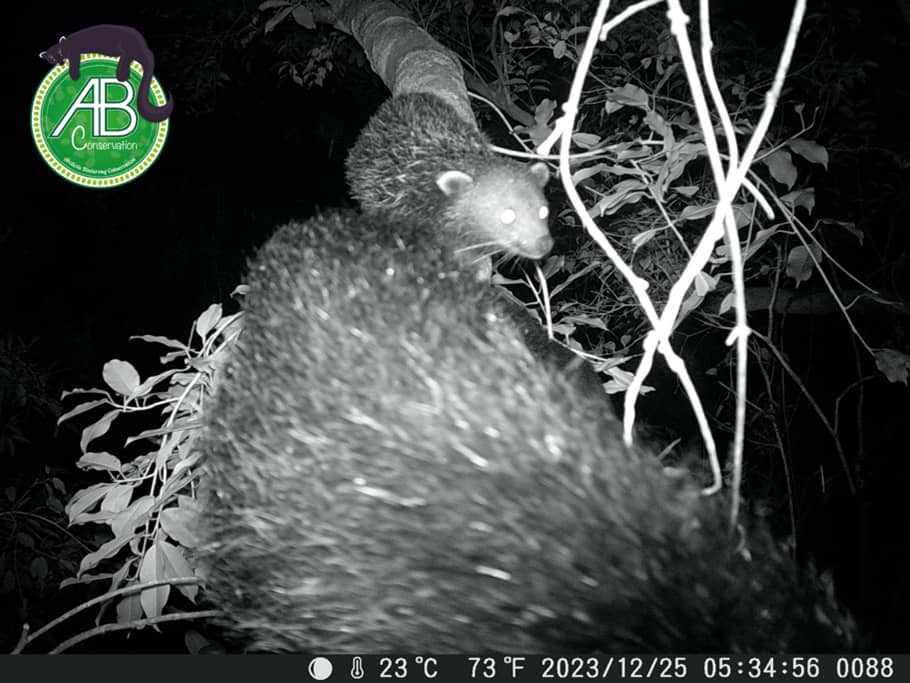
Photograph of a binturong and its juvenile obtained by camera trapping - Irawan forest, Palawan Island, Philippines
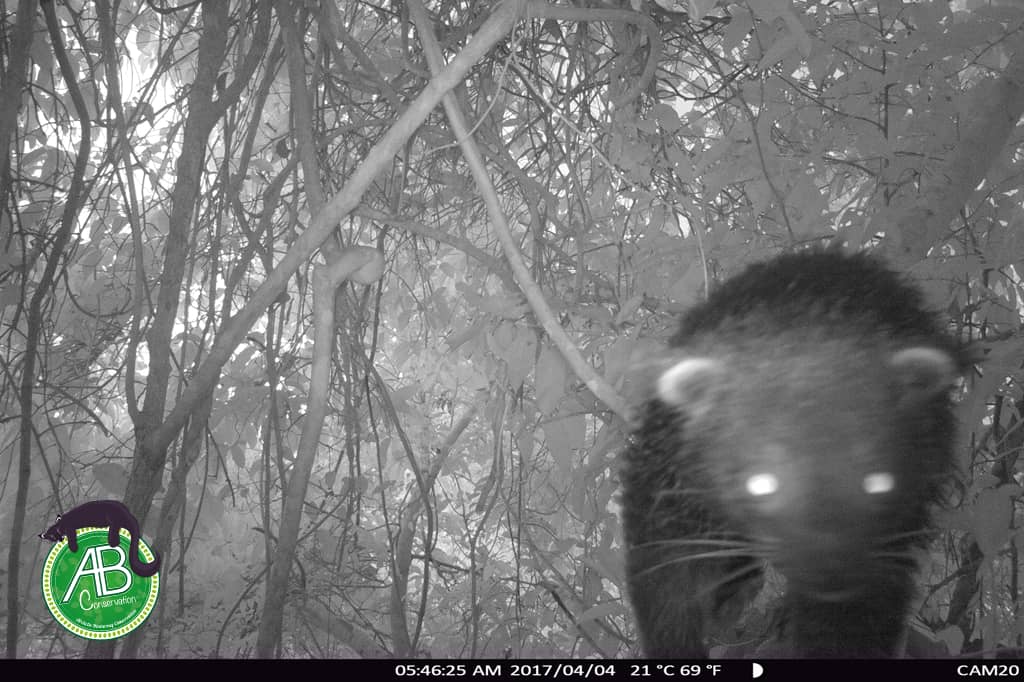
Photograph of a binturong obtained by camera trapping - Second study site, Palawan Island, Philippines
Since 2023, photographic traps have been installed in a protected area in the centre of the island to highlight binturong’s preferences at the micro-habitat level.
Data is still being acquired and the goal will be to extend this protocol to other parts of the island. This will allow us to assess the characteristics common to areas where binturong is most frequently observed. We will be able to categorise the different habitats of Palawan according to their adequacy with the needs of the binturong. The identified characteristics will then be used to identify priority conservation areas.
Since 2024, we have reinstalled photo traps in our first study site, located further northeast of the island. The objective is to analyze the the impacts of Typhoon Odette in 2021 on the binturong population, and thus study their resilience..

The current scientific team in the Philippines has a total of eight members:
We welcome local vocational training students through a partnership with the Palawan State Universityand some international students on internships.
The project is made possible through different local partnerships and the people who lead them: Atty Carlo B. Gomez, Romina Magtanong et Myla S. Adriano (City-Environmenal and Natural Ressources Office), Dr Ronald Edilberto A. Ona (Palawan State University), Melinda et Chris Walsh (Sabuya Coffee Trading), Elizabeth Maclang (Puerto Princesa Subterranean River National Park), Sabine Schoppe (Katala Foundation).
ABConservation, it's:
An office in France
57 rue Cuvier MNHN CP31
75005 Paris
An office in the Philippines
Unit 15, Maria Apartments
Barangay San Manuel
5300 Puerto Princesa City, Palawan, Philippines
© 2025 Arctictis Binturong Conservation
Webmaster: Romaric Perrucaud